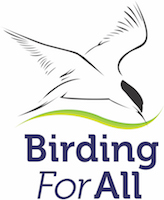GOB 63 – Hands up who like fluffy kittens?
(This article first appeared in the April 2015 edition of Birdwatching magazine)
Hands up who likes furry pets, penguins and Puffins. OK. Now, hands up who likes starlings, snakes and spiders.
A few generations back most people considered the wild world a resource created by their deity for mankind’s benefit; ‘useful’ plants and animals or bad or useless stuff. Good things could be eaten or used as fuel and a few were pretty, medicinal or smelled nice. Bad things tried to eat you, stung, bit or otherwise annoyed although some were just considered too ugly to be allowed to thrive so everything else could be destroyed creating space for us to build on or grow crops.
Around then the balance between town and country tipped. More and more of us became urbanised until in some places, like Australia, 95% of us live in towns and cities. This shift may account for our lack of environmental awareness, but ought to stop us splitting the wild world into the good, the bad and the ugly.
I would argue that the cultural capital carried by citizens of the world actually accounts for the number of people who champion cute and cuddly things and either persecute or fail to protect the rest. When coupled with capitalism it is responsible for completely wrong attitudes.
Foxes are bad as they kill chickens, which are owned. Cats are forgiven killing songbirds that belong to no one. Barn Owls kill rodents, which we think of as bad, so they are good. Hen Harriers are bad as they eat grouse which rich people pay to kill.
We killed off the top predators in this country centuries ago… bears, and wolves remain baddies in fairy tales. Our surviving top predator risks the cash cows of commercial interests so we cull badgers.
But this whole way of thinking is wrongheaded. A few nineteenth century giants of science realised that our ecology was an intricate balance necessary for survival.
Most of us at least pay lip service to this need to keep things in balance. A generation of ecological disaster movies warn us to forgo monoculture, stop using broad-spectrum insecticides and think about organic growing for the health of the world. Yet we have a long way to go when it comes to the detail… and that’s where the devil lives
Put aside commercial interest and you find that predators do not challenge food production, but are just a potential predator of profit. Inoculate livestock against TB rather than kill badgers. Be happy with smaller bags of grouse so Hen Harriers can thrive and stop planting winter wheat so farmland bird numbers recover
But while we struggle with keep the environment healthy without it becoming impossible for farmers and others to make a living, some of those vested interests seem determined to muddy the waters.
Brood management might seem reasonable to prevent predators ruining grouse shoots… until you take into account that grouse moors are about two hundred pairs of Hen Harriers short of what they should hold. Helping songbirds survive is reasonable until you realise that those advocates want to help them by culling other birds, peregrines and the like. Some defend their own actions by saying that even the RSPB culls foxes that threaten Little Tern colonies without pointing out that the current imbalance caused by farmers, shooters and us consumers has to be addressed in the short term to avoid local extinctions and redress the balance. It’s not an easy task to educate us all and make people wary of these commercially motivated responses.
Personally I don’t find cats cuddly and, although snakes scare me I understand their place in the scheme of things. But, damn it, I have a hard time convincing my wife that the starlings are as deserving as the blackbirds or robins of the mealworms she puts out. Don’t even mention spiders; she wants them eliminated from the planet!
Hear the Podcast





